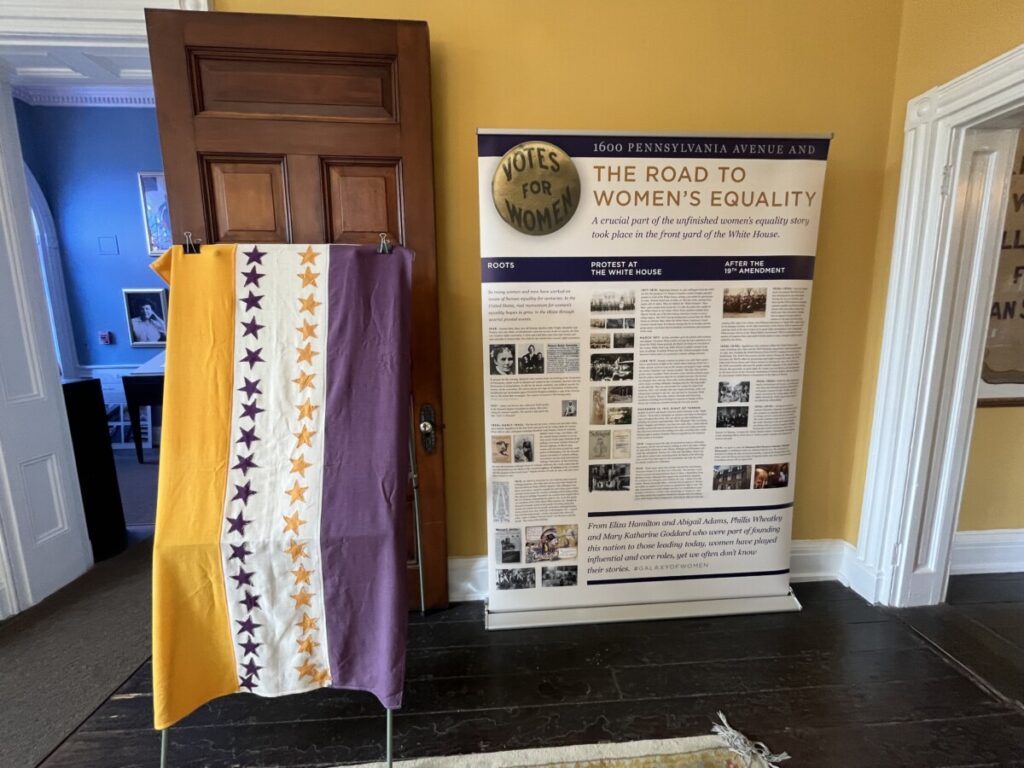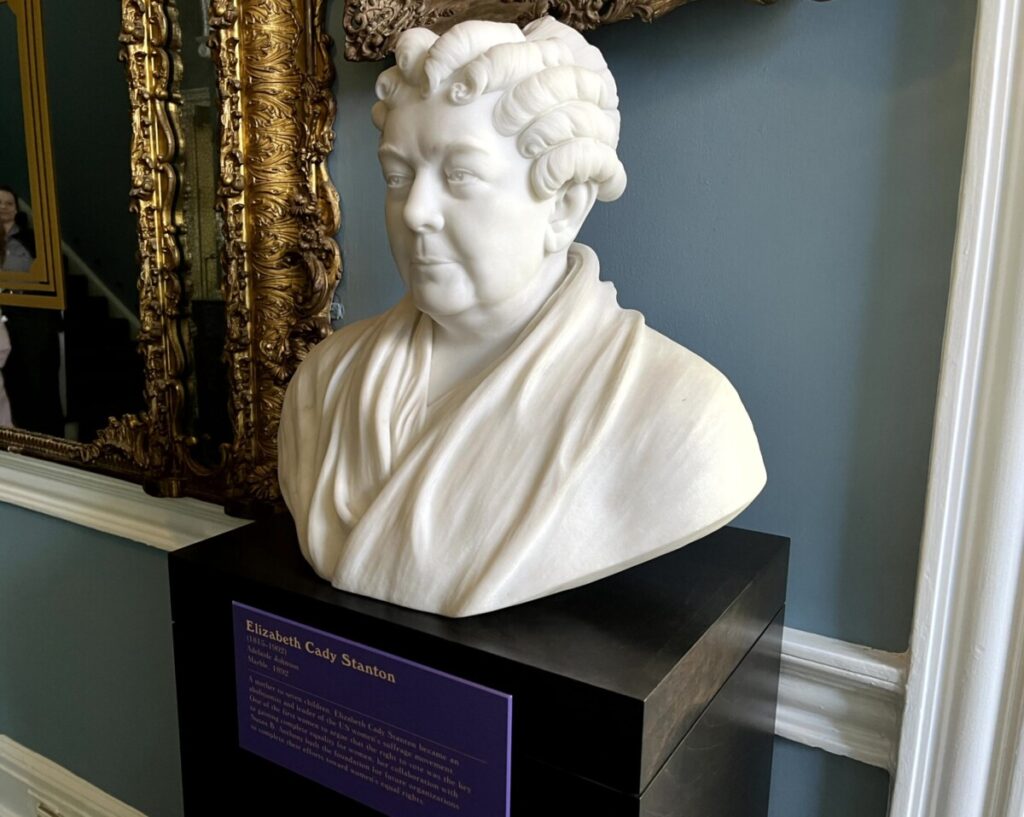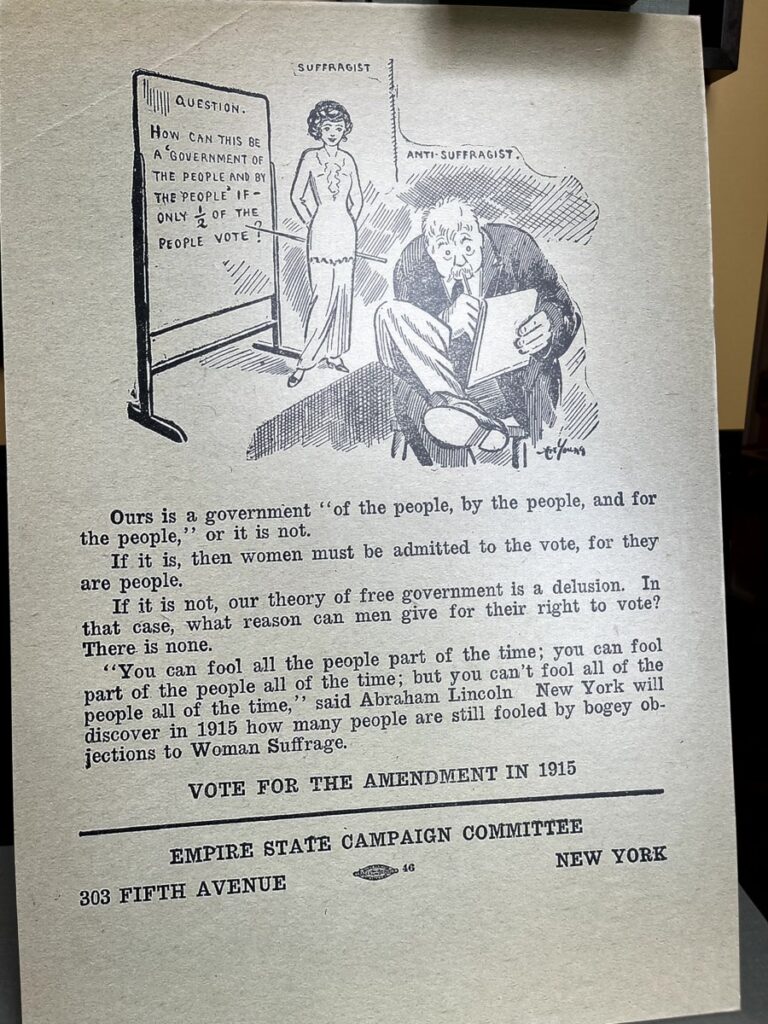In the previous post, we visited the US Holocaust Memorial Museum where we saw how the Jewish people in Germany and most of Europe were stripped of their rights. The next day, Thing 1 wanted to tour the Belmont-Paul National Women’s Equality Monument. I’d never heard of this small museum, but it tackles the subject of human rights. In this case, it is the struggle for women to gain equal rights in the US.
The house is named after Alva Belmont and Alice Paul. Alva Belmont, the former Mrs. Willie K. Vanderbuilt, hosted many women’s suffrage meetings at Marble House, her cottage I toured in Newport, Rhode Island. However, I wasn’t familiar with Alice Paul. The museum details Alice Paul and the work of the National Women’s Party, which used the house as its headquarters for over 80 years.
Alice Paul
So who was Alice Paul? Born in 1885, she was a Quaker and suffragette. After completing a Masters degree, she traveled to England to study economics. While there, she joined forces with Emmeline Pankhurst and her two daughters in the militant British women’s suffrage movement. During this time, Paul faced arrest and imprisonment several times.
When she returned to the University of Pennsylvania to complete a PhD, Paul involved herself with the National American Women Suffrage Association (NAWSA). Not one to sit on the sidelines, she spearheaded a women’s march in Washington, DC on March 3, 1913. Despite police presence, spectators blocked the procession route until the US Army arrived and the procession continued as planned. However, the refusal of police support kept the event in the news much longer, resulting in increased attention to the women’s movement.

Due to disagreements within the NAWSA, Alice Paul and Lucy Burns created the National Women’s Party (NWP) in 1916. Activities included nonviolent tactics such as silent pickets in front of the White House. Some 2,000 women, adorned with gold, purple, and white sashes, became known as Silent Sentinels.

Police officials arrested the protestors a few months later. At Occoquan Workhouse, many women faced beatings and forced feedings. Instead of squashing the women’s movement, the inhumane conditions brought about public sympathy. In 1919, President Woodrow Wilson and Congress passed the 19th Amendment, giving women the right to vote.
The Belmont-Paul House
The Belmont-Paul House served as the NWP headquarters beginning in 1929. At that time, the house was over a century old. Robert Sewall built the house in 1800 and rebuilt it after a fire destroyed it during the War of 1812. Sewall descendants remained in the house for 100 years. In 1929, with the help of Alva Belmont, former wife of Willie K. Vanderbilt, the NWP purchased the home for its headquarters.

Visitors enter the back of the brick house and access the main house through the central Hall of Portraits. Immediately, our eyes noted the fan-shaped stained glass surrounding the front door. According to the National Park Service (NPS), the hallway looks much like it did under Alice Paul’s helm. The stained glass window was recently restored after the house underwent renovations.

Busts of Susan B. Anthony, Elizabeth Cady Stanton, Alice Paul, and others flank gilded mirrors and portraits of other influential suffragettes. Above the staircase, a banner in all caps reads, “We demand an Amendment to the United States Constitution Enfranchising Women.”
Bright, yellow-painted rooms come off the hallway and display mementos, banners, and information about Paul and the NWP. The desk of Susan B. Anthony, gifted to Alice Paul, stands proudly in one room. Another section lets people “dress like a suffragette” by donning the sash, long coats, and hats popular in the early 1920s. Most of the banners are hand-sewn since silk-screen printing didn’t exist.

Paul’s Efforts Post 19th Amendment
While many felt the women’s movement ended with the ratification of the 19th Amendment in 1921, Alice Paul and the NWP didn’t stop there. Paul and Crystal Eastman wrote the first Equal Rights Amendment (ERA) draft in 1923. The Amendment passed in 1972 but wasn’t ratified by 38 states until 2022. Through the years the NWP branched out globally to help women worldwide reach equality.
One wall displays pictures of women serving political positions such as Geraldine Ferraro, Condoleezza Rice, and Ruth Bader Ginsberg. By 1997, the NWP stopped lobbying activities and became a non-profit organization. It remained at the site (then called Sewall-Belmont House) until 2016. In 2020, the NWP ceased operations and merged with the Alice Paul Society.
In Conclusion
The National Park Service operates the museum and admission is free. On select days, rangers lead one-hour guided tours of the house. Located near the Hart Senate Office Building, the historic house is within walking distance of the US Capitol, Supreme Court, and Library of Congress, so it’s easy to pop in if you have an extra half hour.

For more information about the historic monument, visit the website here.
